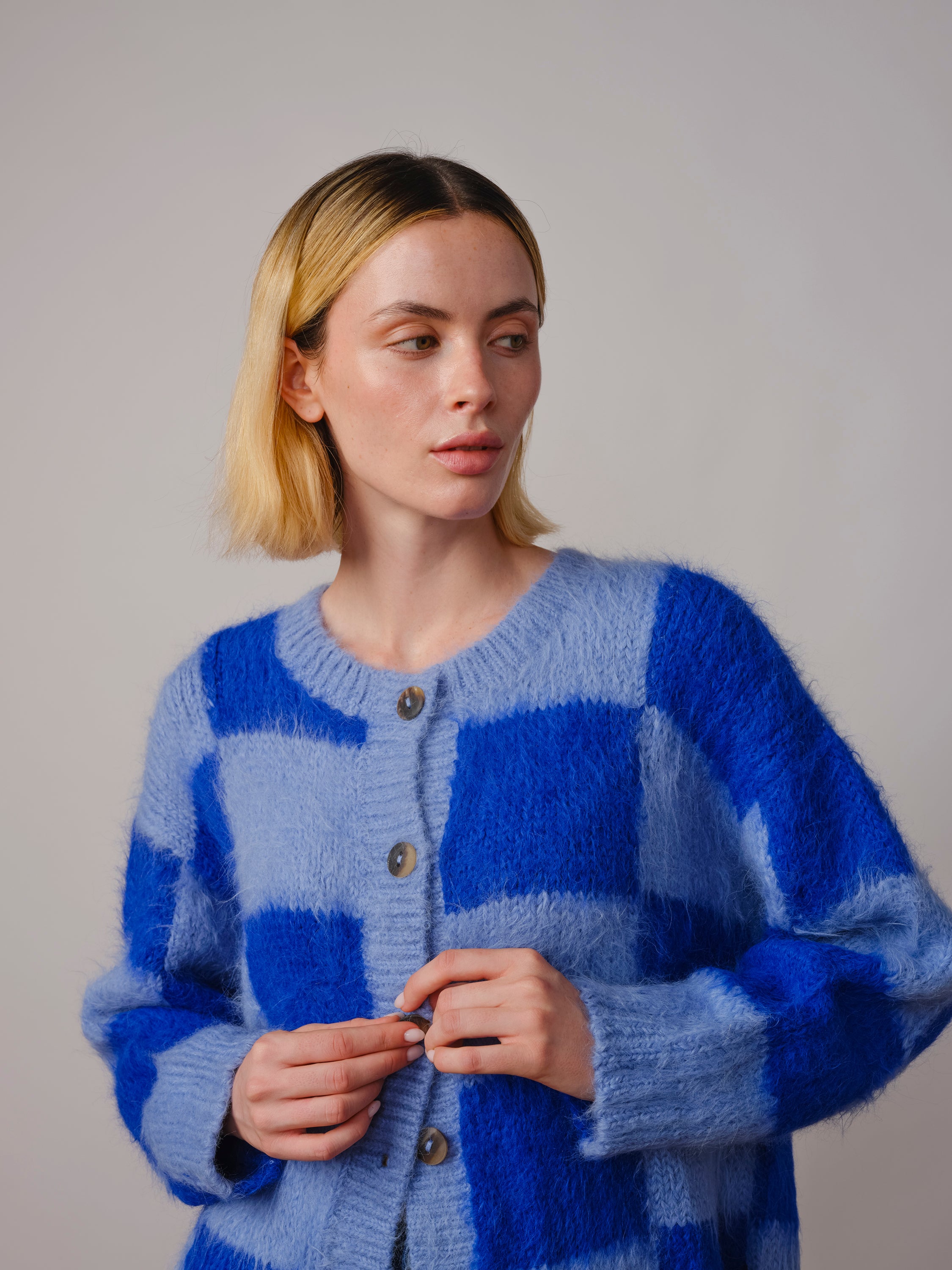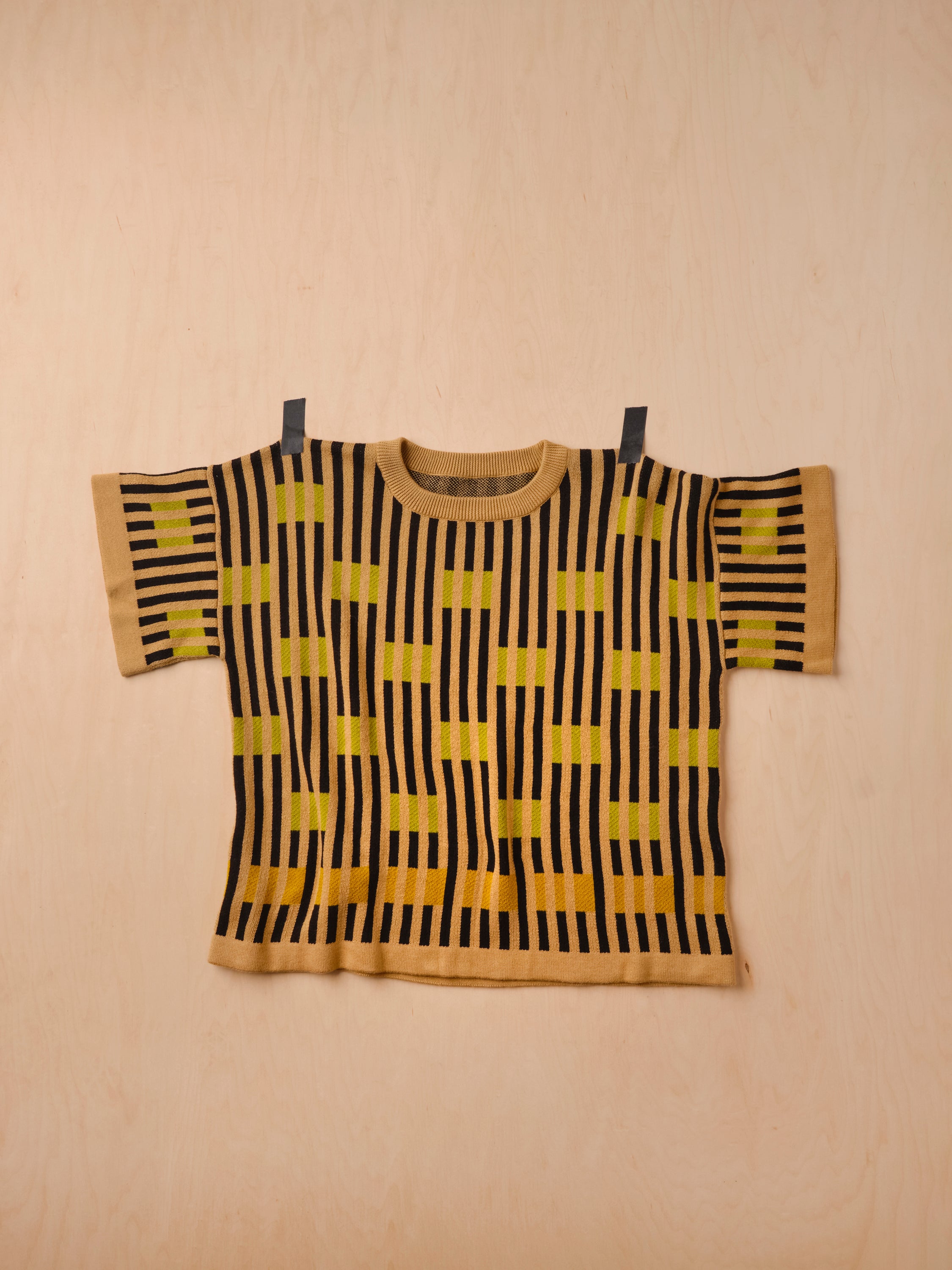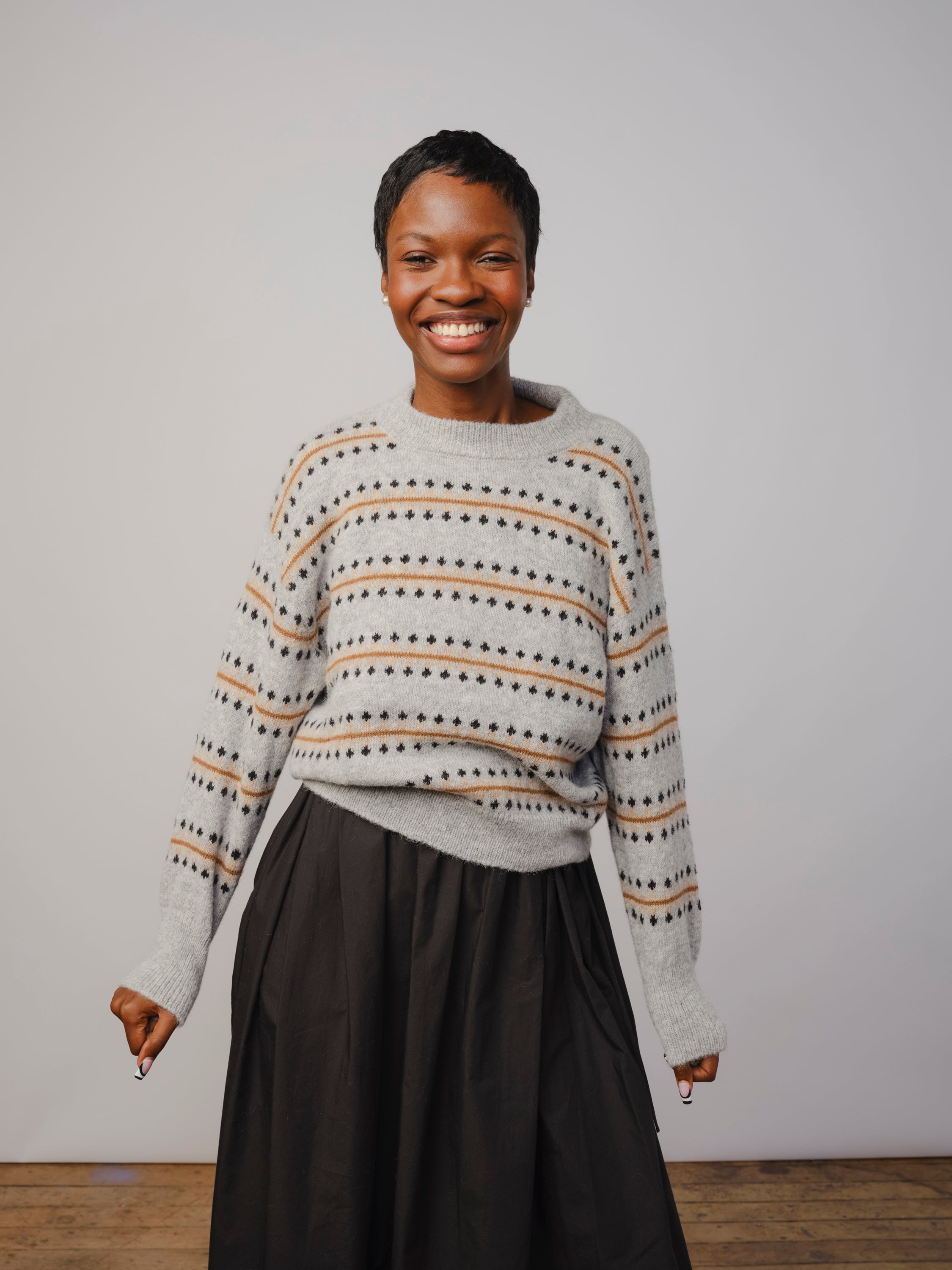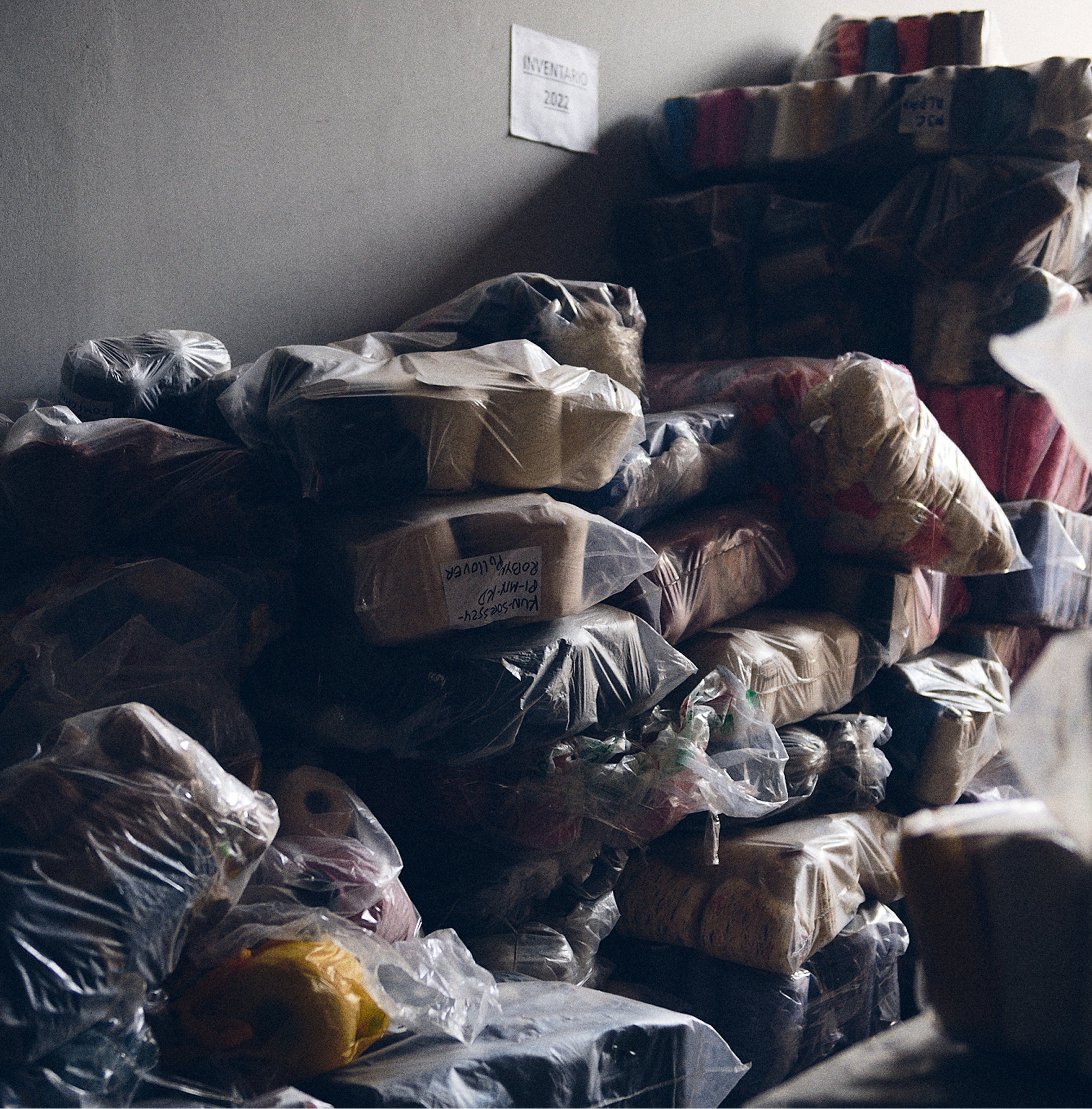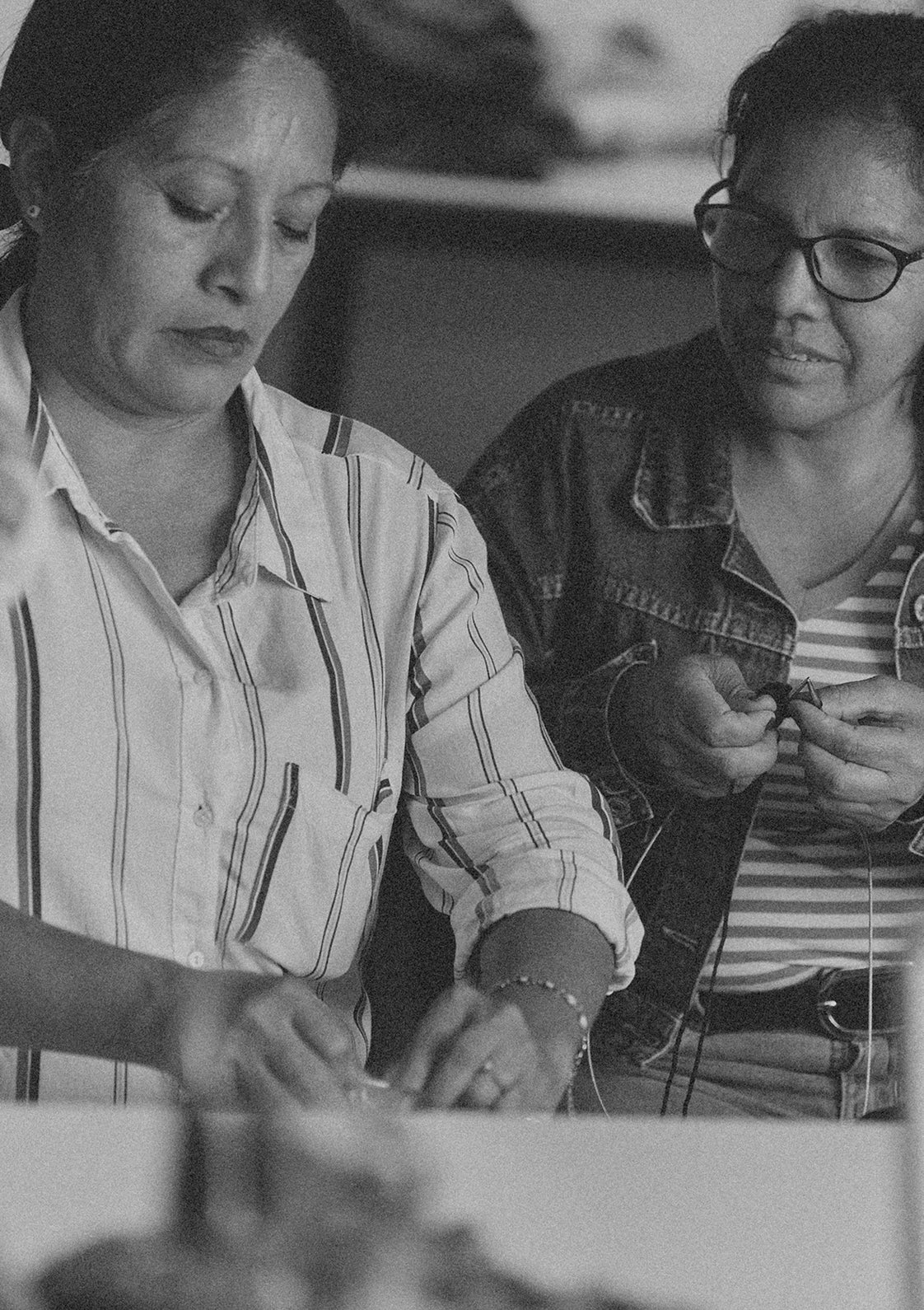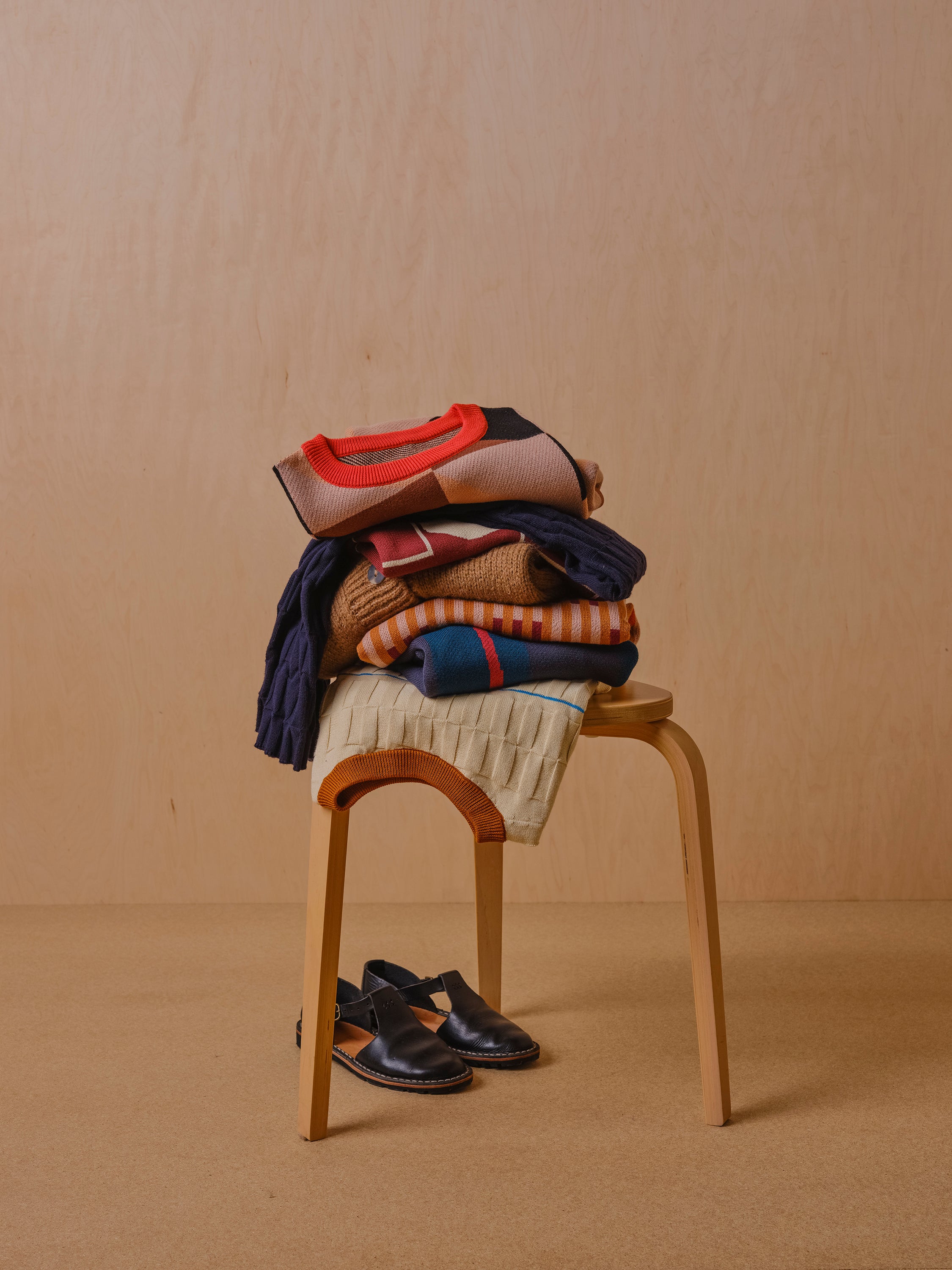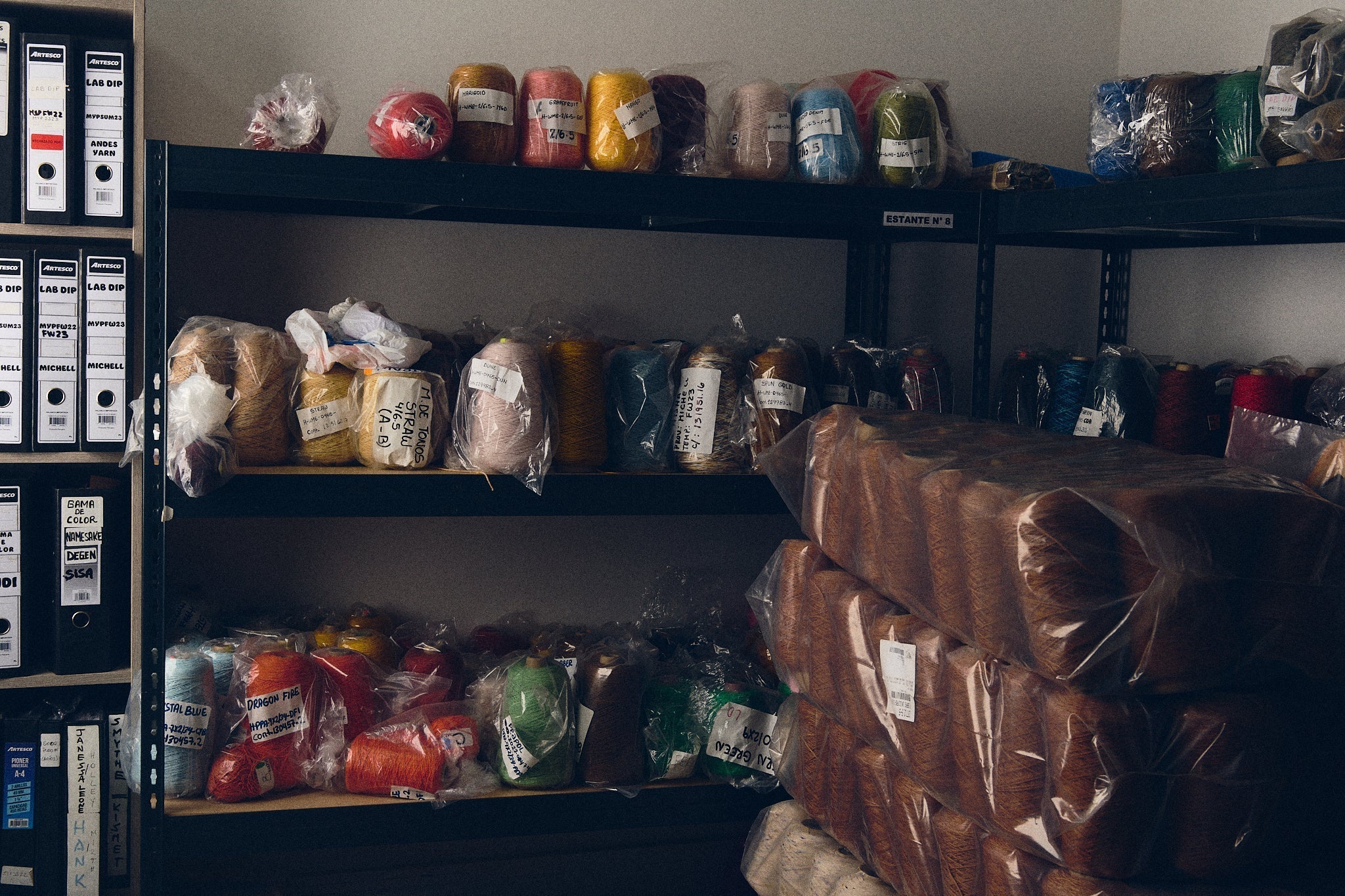In the textile and apparel industries, the term deadstock refers to surplus materials—often high-quality—that remain unused after the manufacturing process. These materials are not inherently flawed; rather, they’re the result of a complex and sometimes unpredictable supply chain.
In the case of knitwear, deadstock can emerge for many reasons. Perhaps a multi-colored design ran short on one specific shade, leaving the rest in excess. A dye lot may have exhibited inconsistencies, rendering part of the batch unusable. Sometimes a client reduces or cancels an order unexpectedly, or errors occur during production. Human hands touch every part of this process, and with so many variables, miscalculations are inevitable.

So what happens to this leftover yarn?
Most commonly, it sits in storage—sometimes for years—while manufacturers attempt to sell or repurpose it. But this is easier said than done. When a designer requires precise quantities of multiple colors, sourcing deadstock in the right combination becomes logistically challenging. Yarns are rarely available in equal amounts, and access to available colorways is often slow and informal. For many suppliers, selling off deadstock simply isn’t a priority.
Eventually, if unused, even premium materials degrade. At that point, they are often discarded, ultimately contributing to landfill waste. This is where The Endery steps in.
At The Endery, we specialize in repurposing high-quality deadstock yarn before it reaches that end. By turning these overlooked materials into thoughtful, limited-edition knitwear, we significantly reduce the environmental footprint of our production. Each item we create diverts waste, conserves water and energy, and participates in a broader circular fashion system.

Our commitment to deadstock design is rooted in first-hand experience. We’ve witnessed surplus yarn accumulate in our own workshop—beautiful, functional fiber with nowhere to go. Our work is a response to that reality: a conscious effort to keep these resources in use and out of landfills.
Deadstock may be a byproduct of an imperfect system, but it also represents an opportunity. When we design with leftovers, we reframe waste as potential—and bring fashion closer to a more sustainable future.
As we like to remind ourselves: waste isn’t waste until it’s wasted.


